Menu
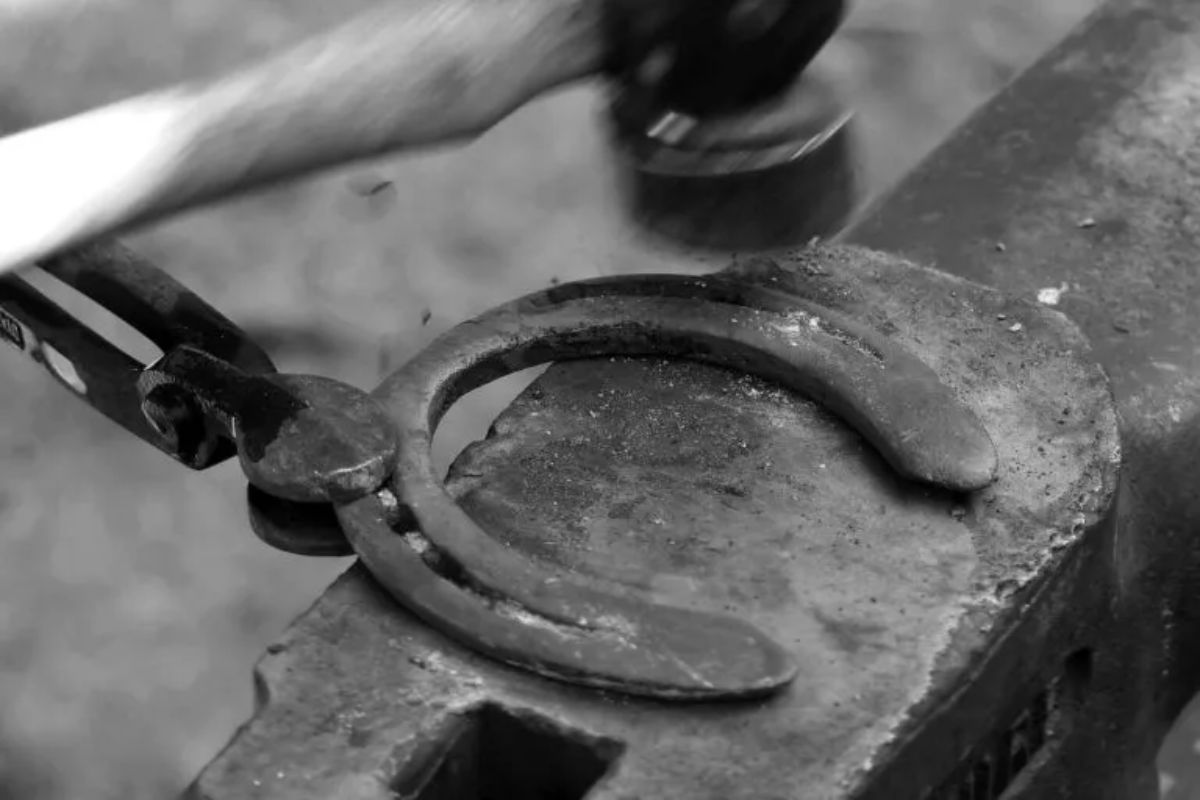
Do you have control over whether your horse is wearing the right shoes? Horse shoes are not just horse shoes. There are a myriad of shapes, materials, and especially ways to attach them. Previously, it was about nailed shoes and alternative shoes. Now it's about the types of fittings used for more special purposes. For example, when is it a good idea to put on ring shoes, and why can it be both an advantage and a disadvantage to use a toe clip? We help you answer questions like these.
Horse shoes are fundamentally not made for the sake of horses, but for ours. They allow us to use the horses as we want – to ride or train in other ways. The Horse's Farrier describes it very precisely: "Shoes are not God's gift to the horse. Shoes are God's gift to humans, so we can use the horse for what we bought it for." We think this hits the mark quite well. A horse's hoof is not made to have a fixed shoe attached, but it is a condition that many horses must live under to be used. We describe all this in more detail – and from several perspectives – in the two previous articles.
Some horses, however, have a leg position or another special need that means a "normal" shoe is not sufficient for riding them. Here, the blacksmith will usually resort to a special shoe that can support the horse better in some way. We will go through the most common types now – including the very traditional shoe type.
The undoubtedly most used shoe type is the parallel shoe. It is available with and without a toe clip, and both have their advantages. Many blacksmiths believe that a shoe without a toe clip is more easily lost than one with. On the other hand, a shoe with a toe clip often tears a piece of the hoof when it is thrown, and there is a chance that the horse can step the toe clip into the hoof. A front shoe has one toe clip, while a hind shoe has two, also called side toe clips. Parallel shoes are also characterized by being completely flat, which is why blacksmiths often raise the toe on the front hooves to ensure better rollover.
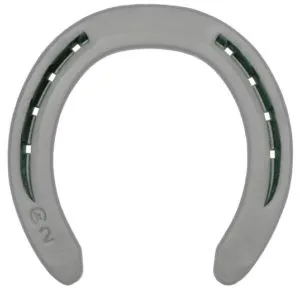
Rollover should be understood as the movement the horse makes when it lifts its hoof from the ground. The front hooves' rollover is created when the horse bends its knee forward and up, while the hind hooves' rollover is created when the horse bends its hock backward and up. This means that the hind hooves are lifted relatively flat and the front hooves more upright, which means that the toe on the front hooves wears out significantly more. Therefore, front and hind hooves should not be treated exactly the same.
Related to the rollover, roller shoes can be used on the horse's front legs. These are rounded all the way around and often have side toe clips. It creates an even better rollover than when using parallel shoes, so it is not necessary to raise the toe in the same way as when using parallel shoes. The shoe is also good for horses that tend to lose their shoes because the rounding simply makes it harder to step off.
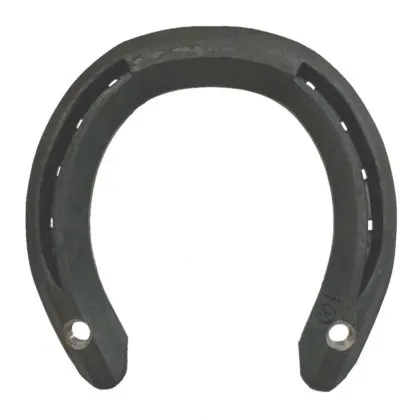
This shoe is also called the Equilibrium shoe, which refers to the brand you see in the picture. The shoe is somewhat reminiscent of a roller shoe, but the toe and sometimes the sides are wider. Unlike the roller shoe which is straight on the inside, the rollover shoe's inside follows the shape of the outside. This means that the rollover is "forged into the hoof" rather than sitting on the outside of the hoof. Otherwise, the shoe has the same effect as a roller shoe but provides better support in soft ground.
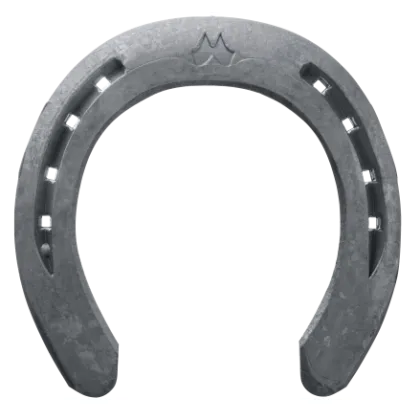
Originally, the purpose of the ring shoe is to support the horse's frogs and bulbs by covering the frog cleft and the soft bulb pads. However, because the shoe covers the hoof all the way around, it is also often used for horses that for some other reason need a little more support at the back and to avoid overloading, for example, after an injury or with the front leg cartilage. Normally, ring shoes have side toe clips and can be both flat and as roller shoes.
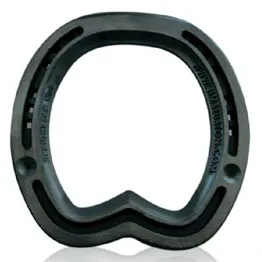
The egg bar shoe – as the name suggests – is shaped like an egg, so the support at the back extends further back than with the traditional ring shoe. Therefore, the frog is not covered, and the shoe is mostly used to support and relieve horses with injuries in the tendons or further up in the musculoskeletal system. The rearward part of the shoe means that the load is distributed over a larger area. The egg bar shoe also has side toe clips.
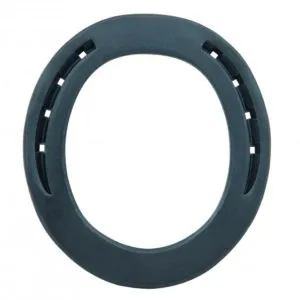
Finally, there is the heart bar shoe, which is another form of ring shoe. It is mostly a combination of the egg bar shoe and the traditional ring shoe and can therefore protect the frog while providing significant support at the back. Because the shoe covers such a large area in the middle of the horse's bearing surface, it can also be good for horses with flat and sore soles, or for horses that are or have been laminitic.
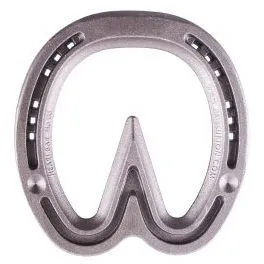
Sources: The Horse's Farrier & The Farrier